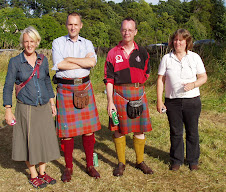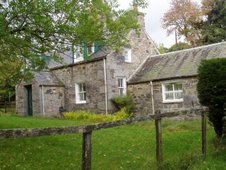Not too bad a day – I’ve
read my Ferrante, walked as far as the butcher, attended to some business, and
had a good proteinful lunch. Archie was here. That leaves a couple of rows of
Dathan hap to be polished off.
I fared reasonably well yesterday with evening
television-and-knitting. BBC iPlayer let me down somewhat, but it let me watch
half of the arty program I had in mind, and thenI switched to Attenborough on
nature which is of course magnificent.
Trollope behind me for the moment, I have been reading Clara
Parkes “Vanishing Fleece”. How I wish I had read it before my Shetland Wool
Adventure last May! What actually happens at Jamieson&Smith, and Jamieson’s?
They both seem to get their wool not exactly on-the-hoof but not long off it.
Then what? How much is done in-house, how much dispatched elsewhere? I could
have asked better questions had I read Parkes.
And how were all these complicated-sounding mechanical
processes carried out in the Olden Days, by women in their crofts on Unst? I
think a few pages on how it was once all done by hand at home – as surely it
must have been – would have been useful. But it’s a fascinating book,
undoubtedly.
Diet
Thank you for your advice. I think I’m pretty strong on
protein – there was a poached egg I didn’t mention yesterday, along with my
okra stew, and when I snack, I snack on cheese. Three days a week I cook and
eat a Mindful Chef meal, and they’re fearfully healthy.
Other
I was struck yesterday, as I occasionally am, at the oddity
of the fact that in GB (alone in the world?) the Head of State does not sing
the national anthem. The Queen yesterday was between the duchesses of Cornwall
and Cambridge, two future queens perhaps, who were belting it out while she stood
silent.
They say that one of George VI’s daughters – Margaret,
surely – asked him once: “What do you sing, Daddy? ‘God Bless Our
Gracious Me?’



Years ago the Yarn Harlot used to write a lot about how she processed wool at home. Perhaps a delve into her online archives would prove enlightening.
ReplyDeleteThanks for the laugh re. God Bless Our Gracious Me! I have done a bit of by hand processing purely for the entertainment factor - carding, making the roving, and trying my hand at a drop spindle. i am happy to pop in the the LYS.
ReplyDelete80-85% of the wool in Shetland is sold to the Woolbrokers (J&S), all breeds. It is sorted there and then shipped off to the mainland for processing. The finer grades of Shetland wool are used for the various types of Jamieson and Smith yarns. They are all spun in mainland UK (Bradford?) and then sent back to Shetland. The other breeds are sold on and the lower grades are sold for carpet, etc. Between several talks from Oliver Henry and reading various other things, like their book, I’ve learned all this.
ReplyDeleteA small amount of Shetland wool is sold directly to Jamieson’s by some of the crofters and farmers, all steps of the processing from sorting the raw fleece to labelling the yarn balls is done right there at the mill in Sandness. I’ve been on the mill tour three times, once with each tour I was on in Shetland, didn’t you have a tour there with Misa last year?
Processing raw fleece is done by many hand spinners, not me though! It involves washing the fleece then either carding or combing it. Fleece can also be spun without any processing (“in the grease”) or with minimal processing where you gently hand wash the locks and then spin them directly. I did this in a class with Margaret Stove once, we were spinnning very fine Merino.....
Very pleased to hear about the poached egg!
ReplyDeleteAs I may have mentioned before, I was born on a Cumbrian sheep farm, with a flock of fell sheep clipped by hand by my father. All of the fleeces were rolled up and sewn into a huge sack before being sent off to the Wool Board. It would never have occurred to my parents to process any of the fleece themselves.
Fast forward fifty years and hand-spinning is no longer such a mystery. I belong to the local guild of Spinners, Dyers and Weavers, where some of the members process fleece into yarn without being keen knitters, their interest being in producing the yarn as an end in itself. Raw fleece is both dirty and smelly, often full of vegetable matter which needs picking over - lots of scouring and prepping needed before you get to any actual spinning. I'll admit that I prefer to spend my time knitting.
Shandy I have a friend whose mother is a keen spinner. When people see the finished product and then ask her what it is going to be, she replies "Yarn." That's what she enjoys. I'm with you, I'd rather knit.
Delete